The 8th Annual World Islamic Funds and Financial Markets Conference 2012 Discusses Key Strategies for Driving the International Development of the Islamic Investments Industry and Tapping into Increasing Demand from Large Corporate Issuers
Manama: Kingdom of Bahrain: 20 May 2012: The 8th Annual World Islamic Funds and Financial Markets Conference (WIFFMC 2012) witnessed a high-profile opening today at the Gulf Hotel in the Kingdom of Bahrain. Confirming its position as the world’s pre-eminent gathering of Islamic investment leaders, WIFFMC 2012 convened leading players, industry thought leaders and key regulators in the international Islamic funds and investments industry for discussions that focused on charting a new growth horizon and expanding the global footprint of the Islamic funds and investments industry.
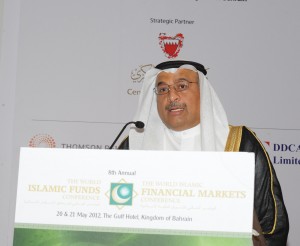
Held under the strategic partnership of the Central Bank of Bahrain, the two day event was inaugurated today by an opening keynote address by Abdul Rahman Mohammed Al Baker, Executive Director – Financial Institutions Supervision at the Central Bank of Bahrain, who provided insights into strengthening regulatory initiatives to further support growth in the Islamic funds and investments industry.
The inaugural keynote address was immediately followed by a special plenary session that focused on assessing dynamic new jurisdictions for Islamic funds. The session featuring Datuk Noripah Kamso, Chief Executive of CIMB-Principal Islamic Asset Management Sdn Bhd; Fernand Grulms, Chief Executive Officer of Luxembourg for Finance; and Ken Owens, Chairman of the Irish Funds Industry Association (IFIA) evaluated what needs to be done to further build the international reach and scale of the Islamic investments industry.
Speaking at the session, Fernand Grulms, Chief Executive Officer of Luxembourg for Finance said that “2011 was a bumper year for the issuance of Sukuk, at US $ 85 bn, that is, two and a half times the pre-financial crisis record of US $ 33 bn issued in 2007. This huge increase indicates that the Islamic capital markets are back in the game. Nevertheless, we should set the figure in context. In the conventional debt markets, in 2011, 5.4 trillion dollars were issued in the USA alone and the sukuk market in 2011 was driven largely by Malaysia. In other words, the short answer to the question of ‘are Islamic investments building international reach and scale’ is a yes and a no. Shari’ah-compliant capital markets activity currently still remains a niche market; but certainly can and will build international reach and scale.”
He also said that “Islamic finance is no longer limited to the countries in which it began, or to the early adopters and one of the key hurdles to achieving international reach and scale is a lack of transparency in the product development area. The absence of a consistent published set of legal rules can be perceived by the market as uncertainty, inefficiency, increased time to market and increased costs, which are elements that markets dislike.”
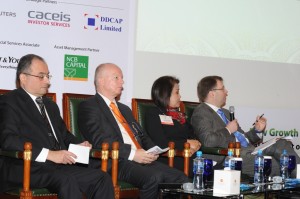 A key highlight of the 8th Annual World Islamic Funds and Financial Markets (WIFFMC 2011) was the highly interactive CEO & Industry Leaders’ Power Debate session led by internationally respected industry players. The session moderated by Rushdi Siddiqui, Global Head Islamic Finance & OIC Countries, Thomson Reuters and featuring Datuk Noripah Kamso, Chief Executive, CIMB-Principal Islamic Asset Management Sdn Bhd; Fernand Grulms, Chief Executive Officer of Luxembourg for Finance; Ken Owens, Chairman of the Irish Funds Industry Association (IFIA); and Dr. Salah Addeen A Qadar Saeed, General Manager – Credit & Risk Management, Bahrain Islamic Bank, discussed key strategies for capitalising on the internationalisation of the Islamic investments market and profitably expanding the global footprint of Islamic investments.
A key highlight of the 8th Annual World Islamic Funds and Financial Markets (WIFFMC 2011) was the highly interactive CEO & Industry Leaders’ Power Debate session led by internationally respected industry players. The session moderated by Rushdi Siddiqui, Global Head Islamic Finance & OIC Countries, Thomson Reuters and featuring Datuk Noripah Kamso, Chief Executive, CIMB-Principal Islamic Asset Management Sdn Bhd; Fernand Grulms, Chief Executive Officer of Luxembourg for Finance; Ken Owens, Chairman of the Irish Funds Industry Association (IFIA); and Dr. Salah Addeen A Qadar Saeed, General Manager – Credit & Risk Management, Bahrain Islamic Bank, discussed key strategies for capitalising on the internationalisation of the Islamic investments market and profitably expanding the global footprint of Islamic investments.
Speaking to the media present at the event, David McLean, Chief Executive of the World Islamic Funds and Financial Markets Conference said that “with the Sukuk markets already off to a strong start in 2012, recent reports are indicating that there will be a significant increase in issuances this year. The issuances in the first quarter of 2012 have already reached approximately US $ 43 bn worldwide, which is nearly half of the total issuance in 2011. 2012 may see new jurisdictions joining the Islamic financial markets particularly from Asia Pacific and the MENA region. With significant infrastructure and social development expenditure in these key markets, along with challenging global conventional bond market conditions, market borrowers are seeking to diversify to other alternate funding sources.
“Given the continued level of liquidity within the overall Islamic investor base, Islamic instruments are emerging as an increasingly attractive and viable alternative”, he added.
A similar view was expressed by Dr. Salah Addeen A Qadar Saeed, General Manager – Credit & Risk Management at Bahrain Islamic Bank who said that “the burgeoning global interest in Islamic finance, particularly Sukuk, represents a unique opportunity for Islamic finance to effectively and efficiently channel the sizeable pool of surplus funds towards the vast productive investment opportunities within and across the emerging economies. The Islamic funds and investments markets have facilitated the raising of funds by businesses, while providing investors with a range of instruments for investment, thereby facilitating the mobilisation and allocation of funds to productive economic activity, beyond local boundaries.”
WIFFMC 2012 continues on the 21st of May and will feature an exclusive session on Corporate Issuers’ Perspectives led by major new corporate borrowers. The interactive panel discussion features Daniele Vecchi, Senior Vice President/Head of Group Treasury, MAF Holding LLC; Paul Gay, Chief Finance Officer, Almarai; and Mona Al-Tawil, Head of Syndication, HSBC Saudi Arabia, will seek to build further momentum for the increasing importance of various Islamic finance instruments, particularly Sukuk, in the corporate funding mix.
 Cash And Trade Magazine For Cash and Trade professionals in the Middle East
Cash And Trade Magazine For Cash and Trade professionals in the Middle East

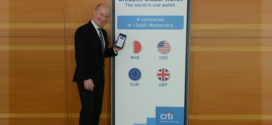
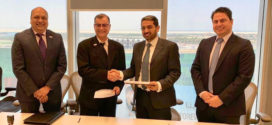
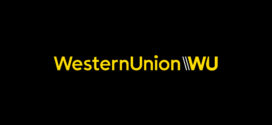
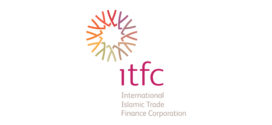
One comment